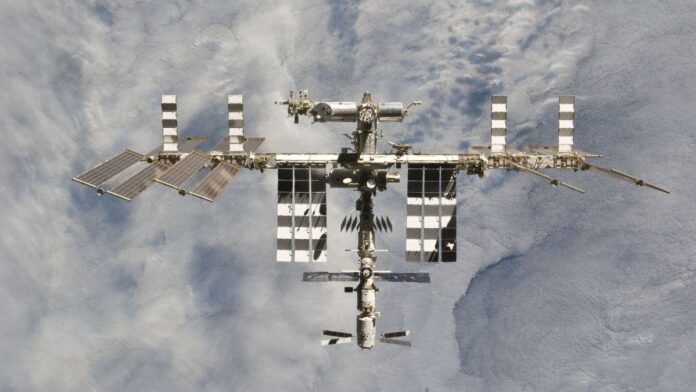The International Space Station (ISS) had to perform a debris avoidance maneuver to dodge yet another piece of space junk on Tuesday (March 14).
Russia’s federal space agency Roscosmos reported that the incident occurred at 2:54 p.m. Moscow time, or 7:54 a.m. EDT (1154 GMT) on Tuesday, in a statement (opens in new tab) on Telegram. The Russian Progress MS-22 cargo capsule currently docked at the orbital laboratory fired its thrusters for 135 seconds to move the station to safety and adjust its average altitude to 260 miles (419 km) above Earth’s surface.
The incident marks the second time in a month that the International Space Station has had to perform such a maneuver. On March 6, the same Progress capsule fired its thrusters for six minutes to avoid a possible collision with a commercial Earth-imaging satellite. According to a 2022 NASA report, the ISS had to perform similar maneuvers to dodge satellites and trackable debris a total of 32 times from 1999 through the time of the report’s publication.
Related: How often does the International Space Station have to dodge space debris?
In 2022, the ISS had to perform two separate avoidance maneuvers to dodge debris created by a Russian anti-satellite (ASAT) weapons test conducted in November 2021 that was condemned by the international community.
Similar incidents have forced the cancellation of spacewalks and prompted astronauts to take shelter aboard the ISS. The frequency of these incidents is increasing as spaceflight activity increases worldwide. Low Earth orbit continues to become increasingly crowded with satellites and pieces of space junk, so much so that a group of NASA scientists and other experts are now calling for an international treaty to tackle the dangerous orbital debris problem. To date, a feasible solution has yet to be found, as more and more objects are lofted to orbit.
And the orbital debris problem can snowball; as more space junk fills Earth’s orbit, the risk of collisions between pieces of space junk increases — and such collisions would create even more pieces of debris.
NASA plans to operate the ISS until 2030, at which point it will deorbit the lab to a fiery demise over open ocean. The agency is already planning the development of spacecraft to aid in its retirement.
Follow Brett on Twitter at @bretttingley (opens in new tab). Follow us @Spacedotcom (opens in new tab), or on Facebook (opens in new tab) and Instagram (opens in new tab).

